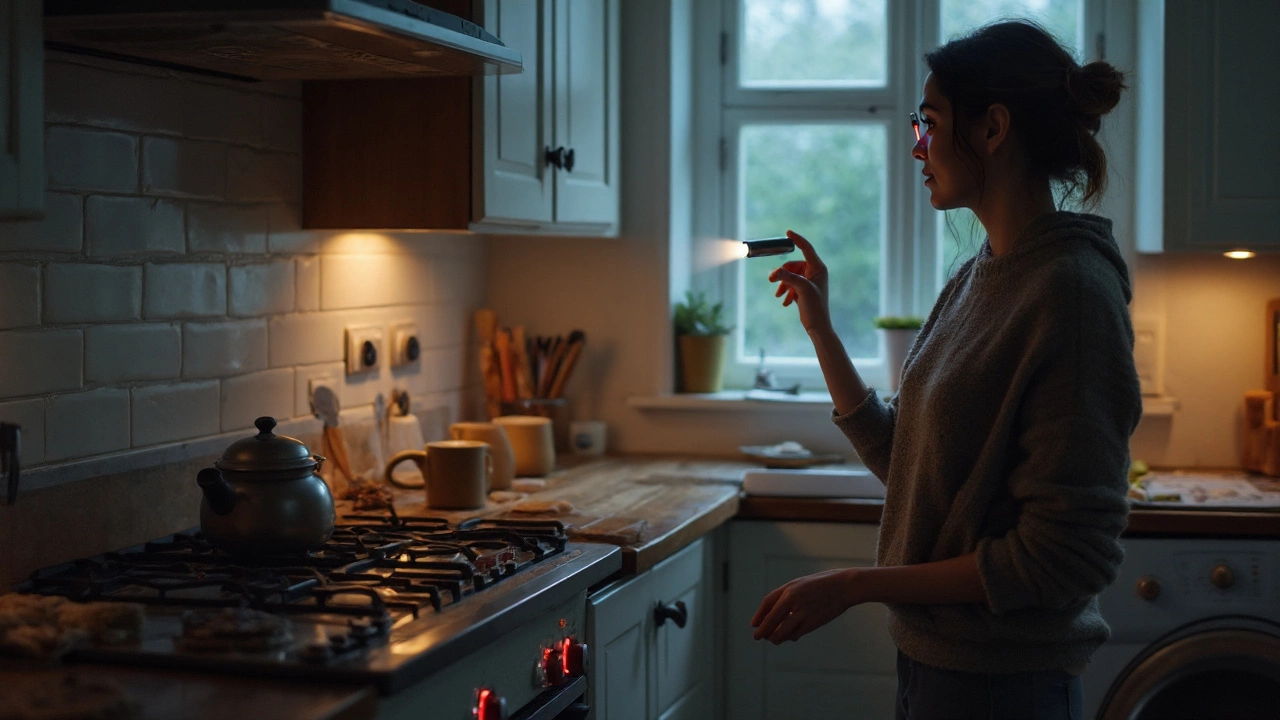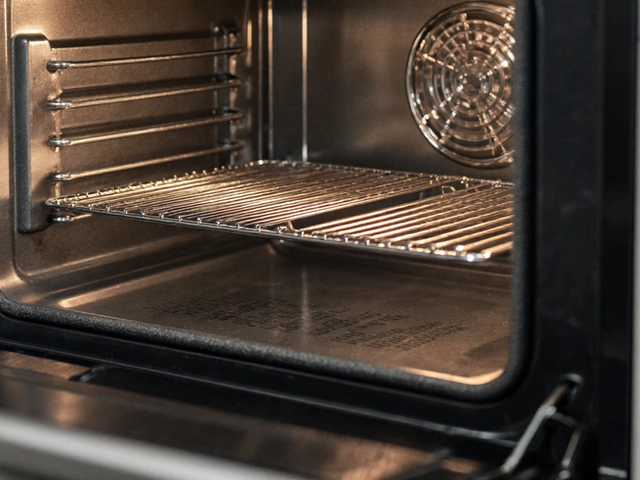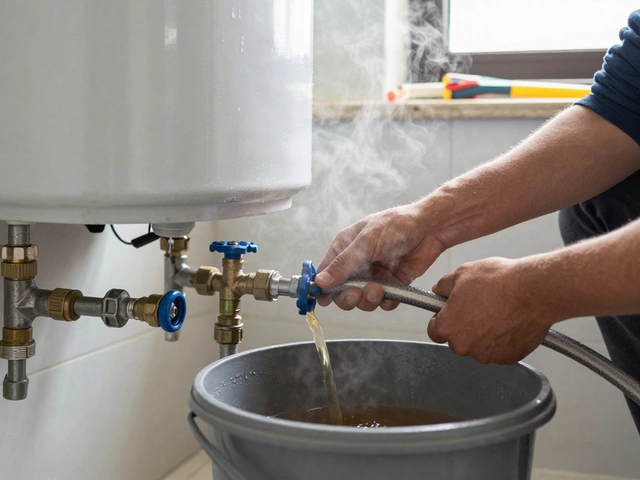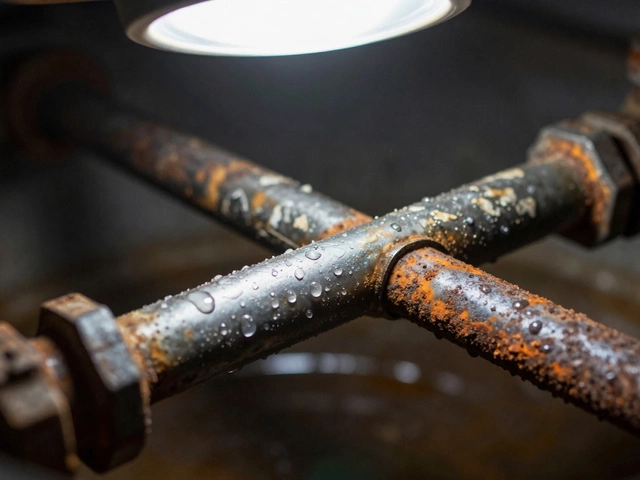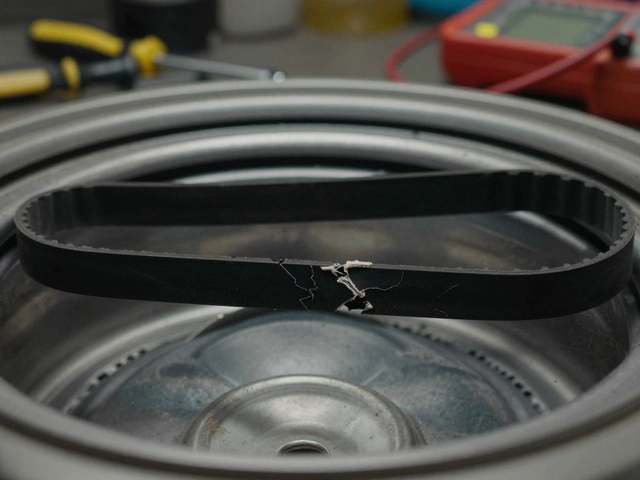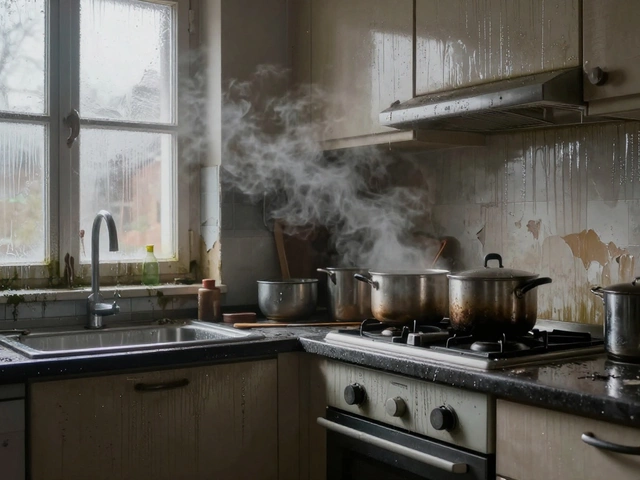Midway through dinner and your cooker just died? You’ve got company. Most failures come down to power issues, tripped safety devices, failed heating parts, or a blocked gas path. The good news: you can rule out the big stuff quickly and safely at home-then decide if it’s a simple reset or a job for a licensed sparkie or gasfitter.
Cooker is a household cooking appliance (range, oven, hob, or cooktop) that converts electricity or gas into heat for cooking. In New Zealand, electric cookers typically run on 230-240V AC; gas models use natural gas (~1.0-1.2 kPa) or LPG (~2.5-2.75 kPa) via a regulator.
Quick answer
- If the cooker is completely dead: check the isolator switch, the wall outlet, and your switchboard-reset any tripped RCD/MCB. If it trips again, stop and call a pro.
- If the oven won’t heat but lights and fans work: suspect a failed heating element or temperature sensor.
- If gas burners won’t light: confirm gas supply, listen for the igniter click, and check the flame sensor holding the flame.
- If the unit keeps tripping power: likely a shorted element, a damaged cable, or water ingress.
- Induction throwing error codes: wrong cookware, overheated electronics, or a fan/cooling issue.
What’s most likely failed-and why it happens suddenly
Sudden failures usually fall into five buckets: no supply (power or gas), a safety device cutting in (RCD/MCB or flame failure), a failed heat part (element or sensor), a control fault (timer/PCB), or user lockouts (child lock or clock not set). A power surge, a spill, or a door slam can be the tipping point that makes a weak part finally give up.
Residual current device (RCD) is a safety switch that cuts power when it detects current leakage (e.g., to earth). Required on many kitchen circuits under AS/NZS 3000 Wiring Rules in NZ.
Heating element is a resistive coil or strip (often 1.8-2.5 kW for domestic ovens at 230-240V) that converts electricity to heat; typical resistance is about 20-30 Ω for a 2 kW element.
Oven temperature sensor is a temperature probe (often ~1000-1100 Ω at room temperature) that tells the control how hot the oven is; failure leads to erratic temps or no heat.
Control board (PCB) is the electronic brain that drives relays, elements, ignition, and displays; vulnerable to surges, heat, and moisture.
Ignition module is a spark generator that clicks to light gas burners; typically produces rapid pulses to electrodes at 3-5 mm spark gap.
Gas regulator is a device that drops cylinder or street gas pressure to appliance-safe levels (commonly ~2.75 kPa for LPG, ~1.1 kPa for natural gas).
Flame failure device (thermocouple) is a sensor that detects flame and keeps gas flowing; if it doesn’t heat, the valve closes for safety.
Here’s the sanity check: is your whole cooker dead, or just parts of it? Whole-unit failure screams “supply or safety cut-off.” Just the oven, hob, or grill failing points at a local part like an element, sensor, valve, or board relay.
Safety first: quick checks you can do right now
- Power off. Turn the cooker off at the isolator switch. If it’s plugged in, unplug it.
- Sniff and look. If you smell gas or see scorching/melted plastic, ventilate and call a licensed gasfitter/electrician. Don’t keep testing.
- Check the isolator and outlet. Many NZ ranges are hardwired via a wall isolator; benchtop ovens may use a 10A plug. Make sure the switch is on.
- Switchboard reset. Look for a tripped RCD/MCB labeled “range,” “oven,” or “kitchen.” Reset once. If it trips again, stop.
- Clock/timer set. Some ovens won’t heat if the clock isn’t set after a power cut. Set time and try again.
- Child lock. Symbols vary; often press and hold a key 3-5 seconds (padlock icon). Unlock and retest.
Citation: safety around live circuits and gas work is regulated by WorkSafe New Zealand and guided by AS/NZS 3000 (electrical) and AS/NZS 5601 (gas). If in doubt, don’t poke around-call a pro.
Diagnose by symptom
No power at all
- Likely causes: tripped RCD/MCB, blown internal fuse, failed terminal block, damaged power cord, failed PCB power supply.
- DIY checks: reset RCD/MCB once; confirm isolator on; try another outlet if it’s a plug-in oven; inspect cord for kinks or scorch.
- Call a pro if: it trips again; you see scorch marks; or it’s hardwired (requires a licensed electrician).
Keeps tripping the RCD/MCB
- Likely causes: shorted element, water ingress (post-cleaning spill), crushed cable, faulty fan motor, failed filter capacitor on PCB.
- Pattern clue: trips instantly when you select a certain function? That function’s element or motor is suspect.
- Pro tip: leave the door open 30 minutes to dry if you’ve just cleaned; moisture can cause temporary earth leakage.
Oven light/fan works, but no heat
- Likely causes: failed bake element (bottom), grill/broil element (top), or temperature sensor open-circuit.
- DIY: with power off, visually inspect for blisters or breaks in the element; if you have a multimeter, a typical 2 kW element measures ~26-28 Ω.
- If elements test fine: the sensor should read roughly 1000-1100 Ω at room temperature. Wildly off? Replace.
Gas burners won’t ignite
- Likely causes: no gas supply, blocked jet, wet electrode, failed ignition module, or misaligned cap.
- DIY: check cylinder level (LPG), verify main gas valve open, dry the burner if a spill occurred, clean ports with a brush (no pins in jets).
- Holds flame then dies: a lazy or faulty thermocouple/flame failure device is likely. That’s a gasfitter job.
Induction hob error codes
- Common causes: pan not detected (wrong material or size), overheated electronics due to blocked vents, or failed cooling fan.
- DIY: test with a flat, magnetic pan that covers most of the ring; clear vents; power-cycle at the isolator for 60 seconds.
- Persistent codes: often a fan, IGBT, or board fault-call a tech.
Step-by-step: electric cooker checks you can do safely
- Confirm supply: 230-240V present at the outlet/isolation point (electrician only, if hardwired). A cheap plug-in tester can verify live/neutral/earth on a socket.
- Look at the terminal block: pull the rear cover only if unplugged. Cracked or heat-darkened blocks cause intermittent power. Replace if damaged.
- Test elements: remove one spade connector from the element and measure resistance end-to-end. No continuity or 0 Ω indicates failure.
- Check the sensor: unplug the oven temp sensor harness and measure resistance. Around 1 kΩ at room temp is typical; infinite or 100 Ω suggests a bad probe.
- Door switch: an open door input can disable some elements. Press and listen for a click; meter for continuity when pressed.
- Control board relays: if you hear a click but no heat and elements test okay, the relay contacts may be burnt. This needs board repair or replacement.
Rule of thumb: elements and sensors are relatively cheap and common failures; boards are pricier and riskier to guess at-test before replacing.
Step-by-step: gas cooker checks (user-safe only)
- Supply on? Cylinder valve open (LPG), isolation valve open (NG), and you’ve actually got gas. Try another gas appliance.
- Burner assembly: cap sits flat, ports are clean, and the igniter tip is dry and within a few millimetres of the cap.
- Ignition sound: consistent clicking when you turn the knob? No click suggests a failed ignition module or a dead power feed (for electronic ignition).
- Hold-down safety: keep the knob pressed 5-10 seconds after ignition to heat the thermocouple. If it still dies, the thermocouple may be weak or the valve faulty.
Anything involving gas joints, regulators, thermocouples, or valves is for a licensed gasfitter per NZ regs. Don’t try to reseat or seal gas fittings yourself.
Induction quirks worth ruling out
- Cookware: needs to be magnetic and cover enough of the zone. A fridge magnet test is your friend.
- Ventilation: blocked side or front vents lead to thermal cutouts. Clear fluff and crumbs; give it breathing space.
- Power cycle: isolate power for a full minute. If errors persist, note the exact code from the manual for targeted repair.
Common causes vs symptoms at a glance
| Symptom | Electric cooker | Gas cooker | Induction |
|---|---|---|---|
| Totally dead | Tripped RCD/MCB, failed terminal block, internal fuse, PCB power | No gas supply, failed ignition power, safety valve issue | Tripped breaker, board failure, lock mode |
| Heats then trips | Shorting element, wet cavity, fan motor insulation fault | Ignition arcing to chassis, moisture under knobs | Overheat cutout, cooling fan failure |
| Oven light on, no heat | Open bake/grill element, failed sensor, relay | Ignition OK but valve not opening (service) | Pan detection fault, board error |
| Burners won’t light | n/a | No gas, blocked jets, wet electrode, bad igniter | Pan not detected |
| Keeps beeping/error | Clock not set, child lock | Flame failure tripping | Thermal or fan error code |
What it might cost in NZ (ballpark)
- Element: NZ$80-$180 part; 0.5-1.0 hr labour.
- Temp sensor: NZ$40-$120 part; 0.5 hr labour.
- Ignition module: NZ$90-$220 part; 0.5-1.0 hr labour.
- Control board: NZ$200-$600+ part; 1-1.5 hr labour (sometimes more if calibration needed).
- Thermocouple/FFD: NZ$40-$120 part; 0.5-1.0 hr labour (gasfitter).
Travel and diagnostics vary by region and brand. Older or premium imported models can push parts higher or involve ordering delays.
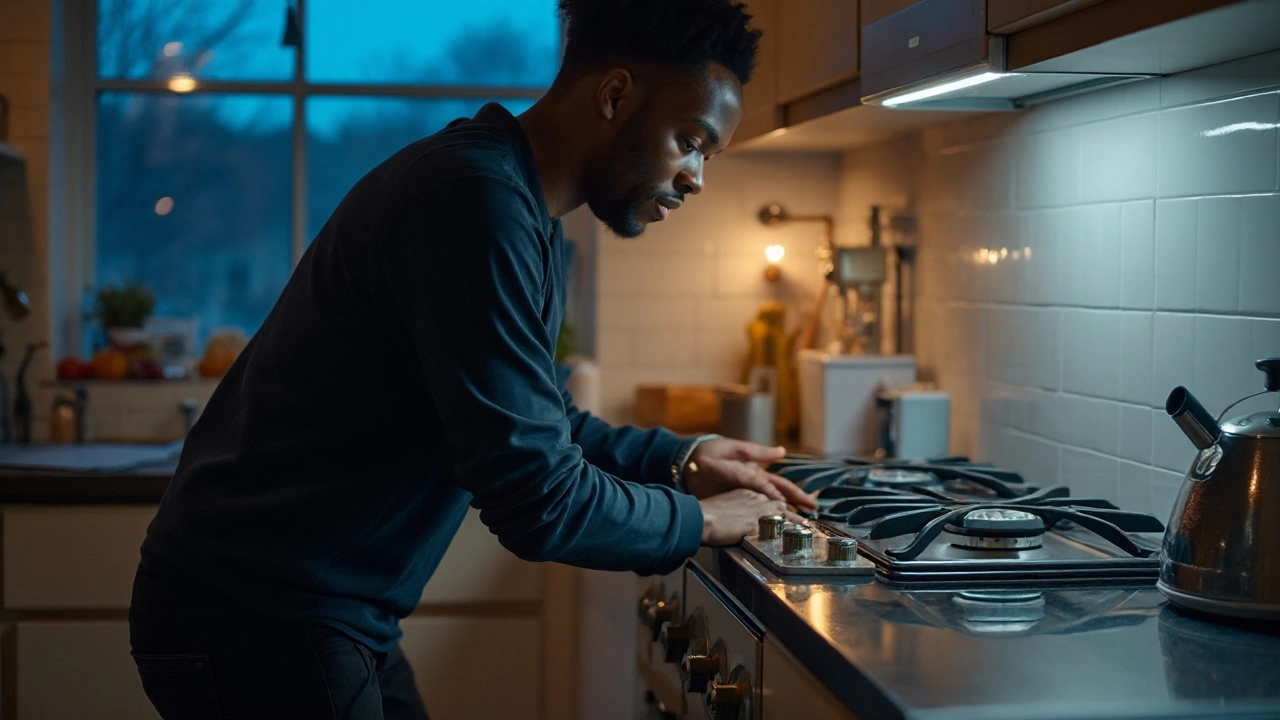
Tests and numbers (for the curious)
- Element resistance: R ≈ V²/P. For 230V and 2 kW: R ≈ 26.5 Ω. A reading near zero or infinite means trouble.
- Sensor reading: many oven sensors sit around 1000-1100 Ω at 20-25°C and climb with heat. Flat readings are suspect.
- Spark gap: about 3-5 mm from electrode to cap helps reliable ignition.
- Gas pressures: NG regulator near ~1.1 kPa; LPG ~2.75 kPa at the appliance. Only a gasfitter should measure/adjust.
When to stop DIY and call a pro
- Any repeat tripping of an RCD/MCB after a single reset.
- Smell of gas, visible arcing, or melted insulation.
- Hardwired electric ranges (disassembly exposes live terminals).
- Gas components beyond simple cleaning and cap alignment.
- Control board diagnosis without clear test data.
Work on mains wiring and gas fittings is restricted in NZ. A licensed electrician or gasfitter keeps you safe and compliant with WorkSafe and AS/NZS standards.
Prevent it happening again
- Keep it dry: after cleaning, leave the door ajar 30 minutes. Moisture is the silent RCD tripper.
- Don’t slam the door: it shortens bulb, relay, and element life.
- Vacuum vents: especially on induction; fans need airflow.
- Use cookware that fits: elements and induction zones last longer with correct-sized pans.
- Surge protection: a whole-home SPD reduces PCB failures from spikes.
Entity snapshots (for quick orientation)
Induction cooktop is a type of hob that uses magnetic fields to heat ferrous cookware directly; efficient and fast, but picky about pans and airflow.
Oven door switch is a safety microswitch that detects door position; some models disable elements or lights when open, affecting preheat.
Related concepts and connected topics
- Kitchen circuits and load balancing: how RCDs/MCBs and isolator switches protect your cooker circuit.
- Gas conversion kits: switching between NG and LPG requires new jets and regulator settings.
- Self-clean cycles: why pyrolytic heat can expose weak elements or sensors.
- Thermal cutouts: bimetal thermostats that open on overheat and reset when cooled.
- Appliance ventilation: cabinetry clearances that stop electronics from cooking themselves.
DIY checklist you can print
- Isolator ON, plug seated, no burning smell.
- RCD/MCB reset once; labels checked for “range/oven.”
- Clock set, child lock off.
- Oven light/fan status noted (for symptom clues).
- For gas: gas valve open, cap aligned, ports clean, dry electrode.
- For induction: magnetic, flat pan; vents clear.
- If any trip recurs or gas smell detected: stop and book a pro.
If you’ve ticked these and your cooker stopped working anyway, you’re likely looking at a part replacement-most often an element, sensor, ignition module, or thermocouple. Those are routine repairs.
What part of the bigger picture is this?
This guide sits inside the home appliance repair cluster, specifically cooker and oven fault diagnosis. Broader topics include kitchen electrical safety and gas installation basics. Narrower topics worth exploring next: replacing a bake element, decoding induction error codes, or troubleshooting a gas oven thermocouple that won’t hold.
Next steps based on your scenario
- Power cuts recently? Set the clock, disable child lock, and re-test a simple bake cycle at 180°C.
- Trips after a deep clean? Dry the oven cavity and door seal area with the door open for 30-60 minutes, then test. If it still trips, call a tech.
- Only grill works? Replace the lower (bake) element after confirming it’s open-circuit.
- Gas hob clicks but no flame? Dry and clean the burner, reseat the cap, and test a different burner to isolate the issue.
- Induction shows “no pan”? Try a magnetic, flat-bottom pan that matches the zone diameter; power-cycle if it still fails.
Frequently Asked Questions
Why did my cooker stop working right after a power cut?
Many ovens lock out heating until the clock is set after a power interruption. Set the time and try again. If still no heat, a surge during the outage may have popped the internal fuse or damaged the control. Check your switchboard for a tripped RCD/MCB and reset once. Repeated tripping points to an insulation fault-call an electrician.
How do I know if my oven element has failed?
Signs include no glow or heat on that function, visible blisters or breaks, and correct lights/fans still running. With the cooker isolated from power, a typical 2 kW element should measure about 26-28 Ω. Infinite resistance or near zero means it’s dead. If elements test fine, check the temperature sensor next.
My gas burners light but go out when I release the knob. What’s wrong?
That’s the flame failure device (thermocouple) not getting hot enough to keep the valve open. Causes include a weak thermocouple, misaligned flame not heating the tip, or a faulty valve. Hold the knob in for 5-10 seconds after ignition. If it still dies, it’s a gasfitter job to test and replace parts safely.
Why does my cooker trip the RCD only on certain functions?
Specific functions energize specific parts. If grill trips but bake doesn’t, suspect the grill element or its wiring. If fan bake trips, look at the fan element or motor. Moisture from cleaning can also leak to earth until it dries. Any trip that repeats after a full dry-out should be checked by a licensed electrician.
Are induction hob errors usually fixable?
Yes, many are simple: wrong cookware, blocked vents, or firmware lockups that clear with a power cycle. Persistent codes point to cooling fan failure or a power module issue. Fans are often replaceable; board repairs depend on brand and parts availability. Record the exact error code-it directs the repair.
Is it safe to replace an oven element myself?
If it’s a plug-in oven and you can access the element mounting screws from inside the cavity, many handy people do it safely with the plug removed. Hardwired ranges expose live terminals and should be left to an electrician. Always isolate power, take photos before removing wires, and never work on live circuits.
Could a dirty oven cause sudden failure?
Yes-liquid spills and steam can track into element terminals, fans, or door switches, creating earth leakage that trips the RCD. Let it dry with the door open, then retry. If it still trips, moisture may have damaged insulation, and it needs testing.
Do I need special cookware for induction?
Yes-magnetic bases only. If a magnet sticks to the pot bottom, it should work. Also match the pot size to the zone; very small pots may not trigger detection. Flat, heavy bases perform best and reduce false errors.
What standards apply to cooker safety in New Zealand?
Electrical work follows AS/NZS 3000 (Wiring Rules) and is enforced by WorkSafe NZ. Gas installations follow AS/NZS 5601 and the Gas (Safety and Measurement) Regulations. Many cooker circuits must be RCD-protected. Hardwired or gas work should only be done by licensed professionals.

